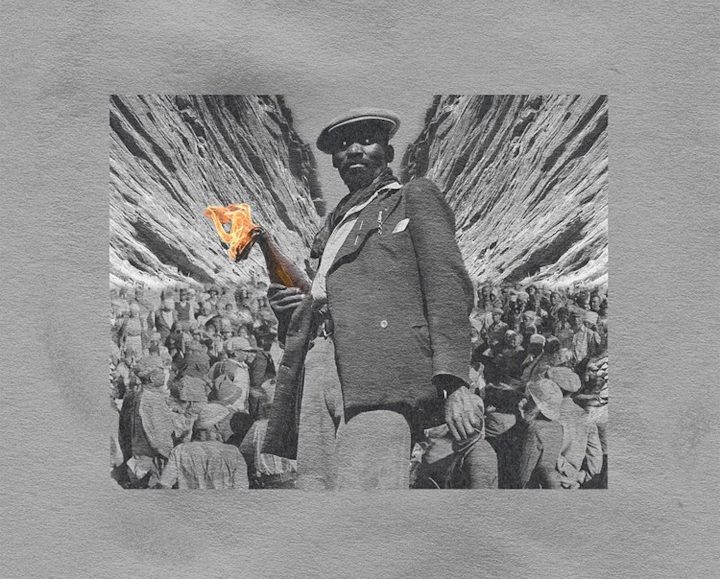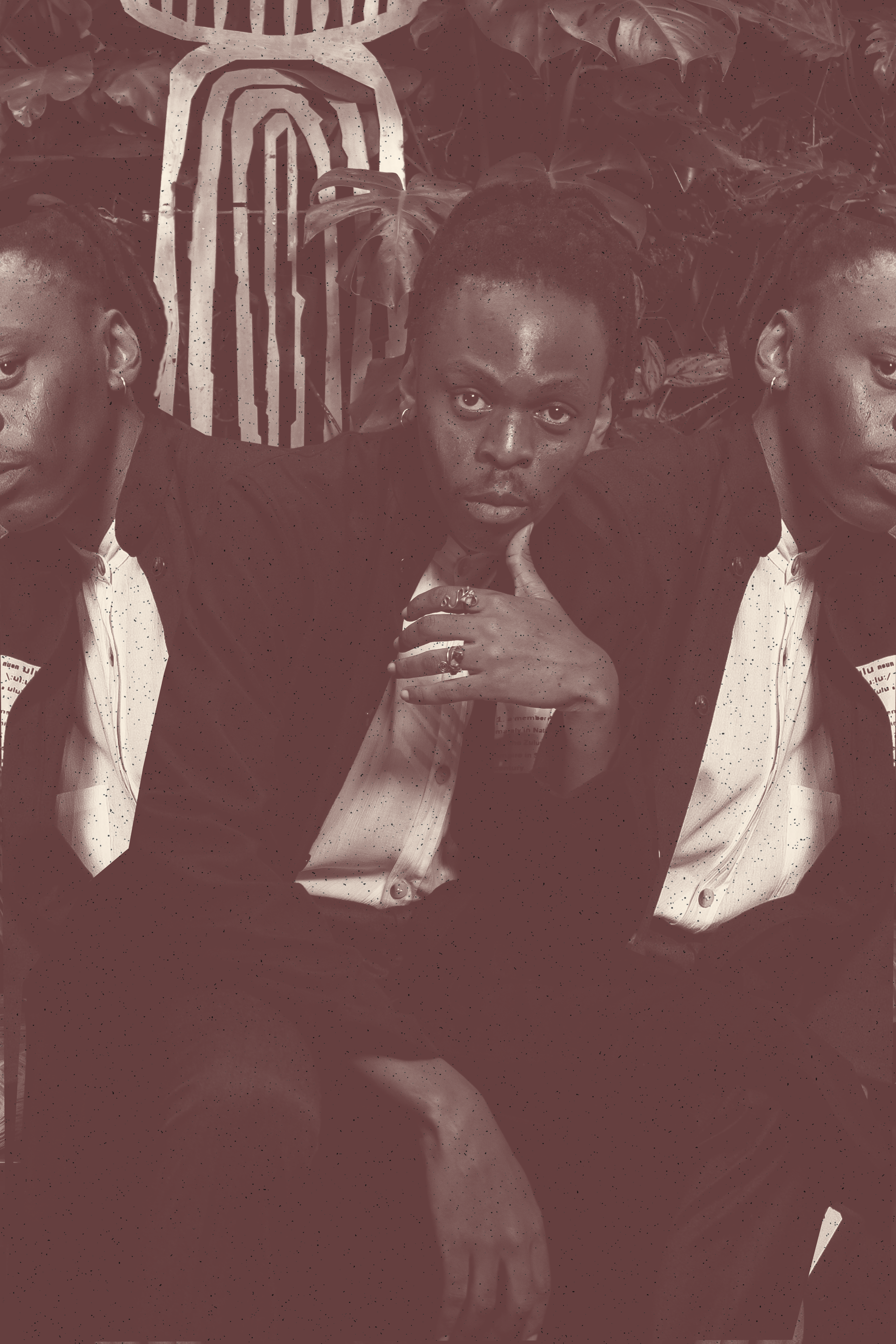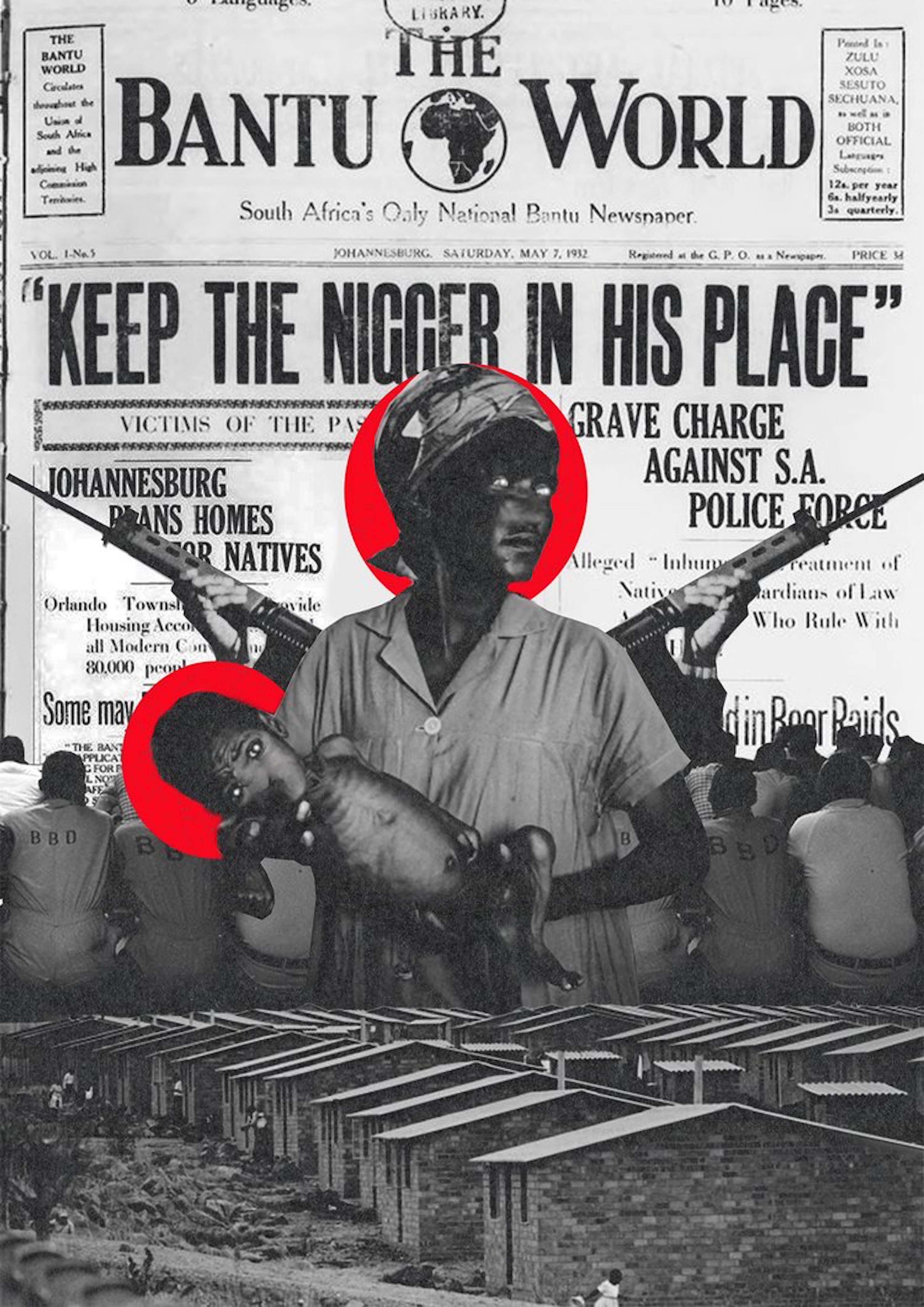MATTERS OF THE ART
An artist rearticulates SA’s traumatic history through old newspaper pages

Thuthukani Myeza’s ‘How to be black for beginners’ solo exhibition reframes The Bantu World newspaper and black historical archives as a site of radical reclamation.
I can’t be a singular expression of myself
There’s too many parts, too many spaces
Too many manifestations, too many lines
Too many curves, too many troubles
Too many journeys, too many mountains
Too many rivers, so many…
– Solange Knowles, Can I Hold the Mic (Interlude)
These lyrics by artist Solange came to mind when I sat down with multidisciplinary artist and creative Thuthukani Myeza to talk about his solo exhibition currently running at the AVA Gallery entitled How to be black for beginners. As a writer, poet, curator and multimedia artist, Thuthukani shows himself (and in his art) clearly not to be “a singular expression of self”. He admits he is wary of identifying himself as an artist, partly due to a slight imposter syndrome, but it may also be because he works in such varying fields. A common thread that runs through all his work is his desire to position himself as a truth speaker no matter the medium, and to function as what he terms a “visual historian”.

‘Ibuya nini IAFrica’ by Thuthukani Myeza. (Photo: AVA Gallery)
Engaging with black histories
Engaging with black histories drives this exhibition. Myeza does so with full force, creating enticing, and at times jarring collages and video work. When he began working with collage in 2020 as the pandemic took over our lives, he wanted to find a way of dealing with a traumatic experience. He says collage became this gateway, activating a “visual therapy session”.
“I was so afraid I could never create anything beautiful again,” he admits. This fear was warranted, as the pandemic engendered uncertainty and, for some, a life of purgatory. Through the medium of collage Myeza set out to cut, reconfigure, place and play with an archive he felt was still in the control of the oppressors who generated them.
As you walk the L-shaped mezzanine gallery of AVA, one work after the other boasts layers of different imagery, imagery embedded in imagery. The works can hold your gaze for a long period if you’re willing to decode and detangle all the meanings. A key archive referenced in most of the works is the headline covers of The Bantu World.
The newspaper was founded in 1935 by Bertram Paver, with the editing and journalism of black writers, thinkers and activists, with the aim of informing and educating the public about the plight of black people. In the work ‘Ibuya nini IAfrica’, Myeza positions an elderly black woman in the centre of the frame. An image of a man holding a newspaper appears on either side of her. The manner in which the ugogo (grandmother) is clutching her purse, implies she is waiting to move, or for instruction. This takes you right back to the title, but truly “when will Africa be returned?” A crowd of people watches her with their thumbs up (an action utilised in the 1952 Defiance campaign as a sign of unity). Framing all of this is a headline from The Bantu World: “Our Strength Lies in the Land”.

Thuthukani Myeza’s solo exhibition ‘How to be black for beginners’ is showing at AVA Gallery until 6 June. (Photo of Thuthukani Myeza: supplied)
Incredibly captivating collage
This collage work is incredibly captivating as it represents the black individual and the collective. When I asked Myeza why the eyes of all his subjects are covered, he answered: “I have a thing. Don’t show the eyes of my subjects because it’s a window to the soul.” This act of protection also speaks volumes about the care he shows in engaging with imagery that depicts black bodies in oppressive situations.
Myeza draws attention to how visual languages play a central role in the representation of our lives or histories. Bell, in her seminal book Art on My Mind calls for “oppositional aesthetics” that combat the normative construction of how the oppressor has perceived and represented the oppressed. Here Myeza explores how we can take these archives and rearticulate them to generate a sense of empowerment. He does this by telling his own stories and speaking or seeking “the truth” on his own terms.
Myeza made a striking comment: “At any given moment, I am looking at someone’s ancestor on my computer.” This passing comment reiterated the awareness he carries when engaging with a problematic archive.
“I got into collage because all I ever saw were white (-owned and produced) archives and I thought the material looked so beautiful because it was these distilled memories. Working with this imagery for me is truly about working with memories. The greatest part of the journey has been discovering that our history is still owned by the people who captured it.” His positioning while engaging the black archive then becomes a point of the reclamation of memories. However, violent imagery is unavoidable and is difficult to mediate.

Thuthukani Myeza’s ‘Black By Demand’. (Photo: AVA Gallery)
Harsh realities
His work ‘Black by demand’ left a weight against my chest. There is the figure of a woman holding a malnourished child at the centre. It is paired with the stark headline: “KEEP THE NIGGER IN HIS PLACE.” It is fascinating to see how Myeza juxtaposes this inherently black archive of The Bantu World with that of a violent white-produced archive, culminating in this subtle opposition of aesthetics. When asked how he traverses the complex terrain of violent imagery and the possibility of retraumatising viewers, he admitted that his main aim is to confront the viewer with these harsh realities. “Who is the viewer?” I asked. With a suspended pause he answered: “Well, isn’t that obvious?”
This moment, where Myeza answers my question with a question, left a palpable weight in the air because I was unsure who this body of work was intending to confront.
The title of the exhibition ‘How to be black for beginners’ maybe sheds some light on his intended audience. The premise for the exhibition is tied to his observation of the recent rise in the cultural appropriation of blackness. This guide, if you factor in the white viewers, is a non-starter as Myeza shows that to be black is to carry with you an inherited trauma, a trauma that won’t leave you, or the next generation you’ll birth.
In reflecting on the reception of the show thus far, Myeza noticed that “the older audience seem to be viewing the artworks with a slight sense of remorse, whilst the younger audience just kind of looks and move on”. I found this particularly interesting in reiterating the fact that beyond being able to acknowledge and sympathise with the grim reality of what it means to be black, it is impossible to transfer the feeling of that daily burden.
Inhabiting blackness as a non-black
Solange’s lyrics don’t just apply to Myeza’s multi-disciplinary practice, but also to the grim reality that “there’s too many curves, too many mountains, too many rivers” that must be inherited to begin even thinking you can inhabit blackness as a non-black individual.
Myeza believes it is serendipitous that the exhibition ‘STONED’ Remembering the 80s’ curated by Cheryl Traub-Atler, is being staged at the AVA at the same time. As the title suggests, it presents work produced by a group of artists during the 1980s State of Emergency era in South Africa. The parallels that emanate are uncanny.
Whether it’s in his writing, poetry, as he holds a slam poetry championship award, or his growing visual art practice, we are sure to know that anytime Myeza has something to say, he’ll find the means to express it. At 26, he has a long career ahead that is sure to be fruitful in discourse and mediating tough conversations. ‘How to be black for beginners’ calls us to face difficult facts yet savour the power in the translation and rearticulation of the archive. DM/ ML
This text was produced during an independent journalism development project by African Arts Content focused on the Church Street art node in Cape Town. ‘How to be black for beginners’ is showing at the AVA Gallery until 6 June.





 Become an Insider
Become an Insider
Comments - Please login in order to comment.